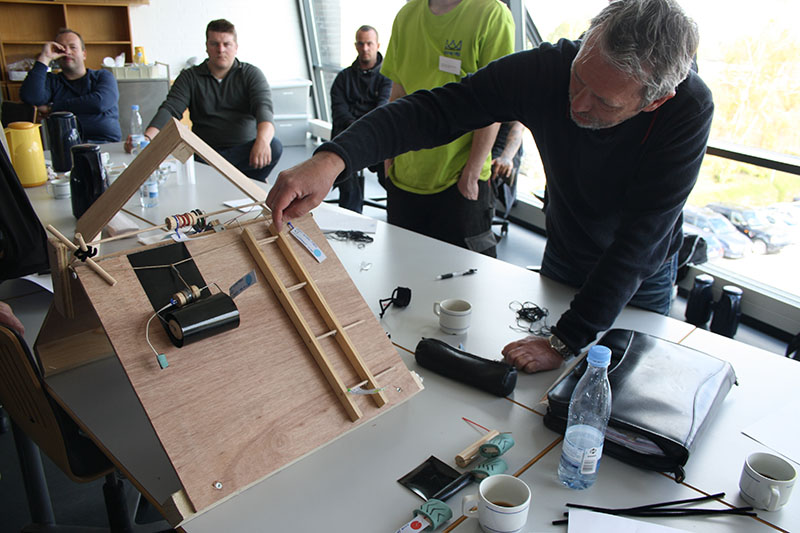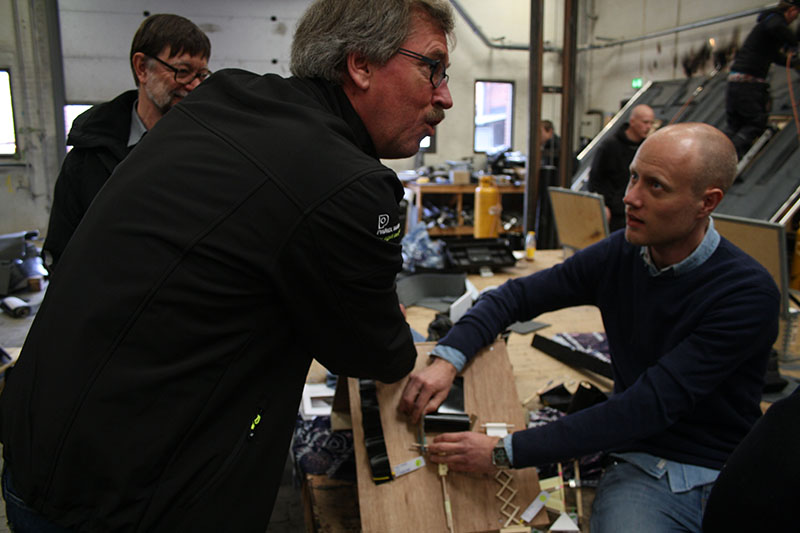Small versions of our ideas is a great way to choose the right concept
In the process from idea to product, we often spend hours building scale models. At first glance it might seem a bit silly and Lego-ish, but there’s method in the madness.
The small models give us a spatial understanding of the idea. We get a deeper and more complete understanding of our concept and the sequences surrounding it.
At the same time scale models is a great way to communicate the idea to our partners and the future audience. In the end this impacts which concept we end up developing.
But let’s start with the benefits we get from the models.
Use models early on
We typically end up with anywhere between a few and 20 different concepts from the initial ideation- and conceptualization-loops. When it’s time to evaluate these concepts, we turn them into scale models.
It’s still early on in the development process, and at this point the models give us a better understanding of the concepts, which helps us in the search for the best and final concept.


PICTURES: We made 20 different 1:10 scale models of the concepts for Slope System, and brought them all to a workshop, where we got valuable feedback.
By turning the ideas into tactile models, we get a spatial understanding of the idea. The dimensions of the products is much clearer, and the processes surrounding the product gets easier to understanding and discuss – especially with feature heavy products like the Slope System.
Choosing concepts
While scale models give us a great understanding of our concepts early in the development process, we don’t just build them for our own sake.
Most times we have several stakeholders in our projects, and scale models are a great way to communicate the concepts we’re working on to our partners. The steering group simply sit down with the scale models and go through the sequences of each concept.
VIDEO: A scale model of a scissor lift we’re currently working on. We made five scale models, demonstrated each concept and shared them with our online steering group.
The same applies when we take the scale models to workshops. Our audience immediately understands the concepts, and we’re able to get much better feedback. Some concepts might already have been killed, and more will fall through when the audience interact with the models.
Everyone understand scale models
Scale models is a simple way to test concepts in a more tactile way and communicate the concepts to relevant stakeholders.
It’s pretty time-consuming to build the models (the 20 scale models of Slope System took around a full work week), while the material it takes is close to nothing. Overall the resources is not overwhelming, at they’re well spend: Some people don’t understand technical drawings, but anyone understand a scale model.
Practical insights
Choosing scale: Our scale models are mostly between 1:5 and 1:10. We choose scale depending on how big the final product is, and how well the details of the concept will be understood at the given scale.
SkectUp before building: Before building the scale models, we draw simple version of them in SketchUp in order to minimize the mistakes we make in the workshop.
Have more questions? Leave a comment below or contact us at sk@lolle-nielsen.dk
